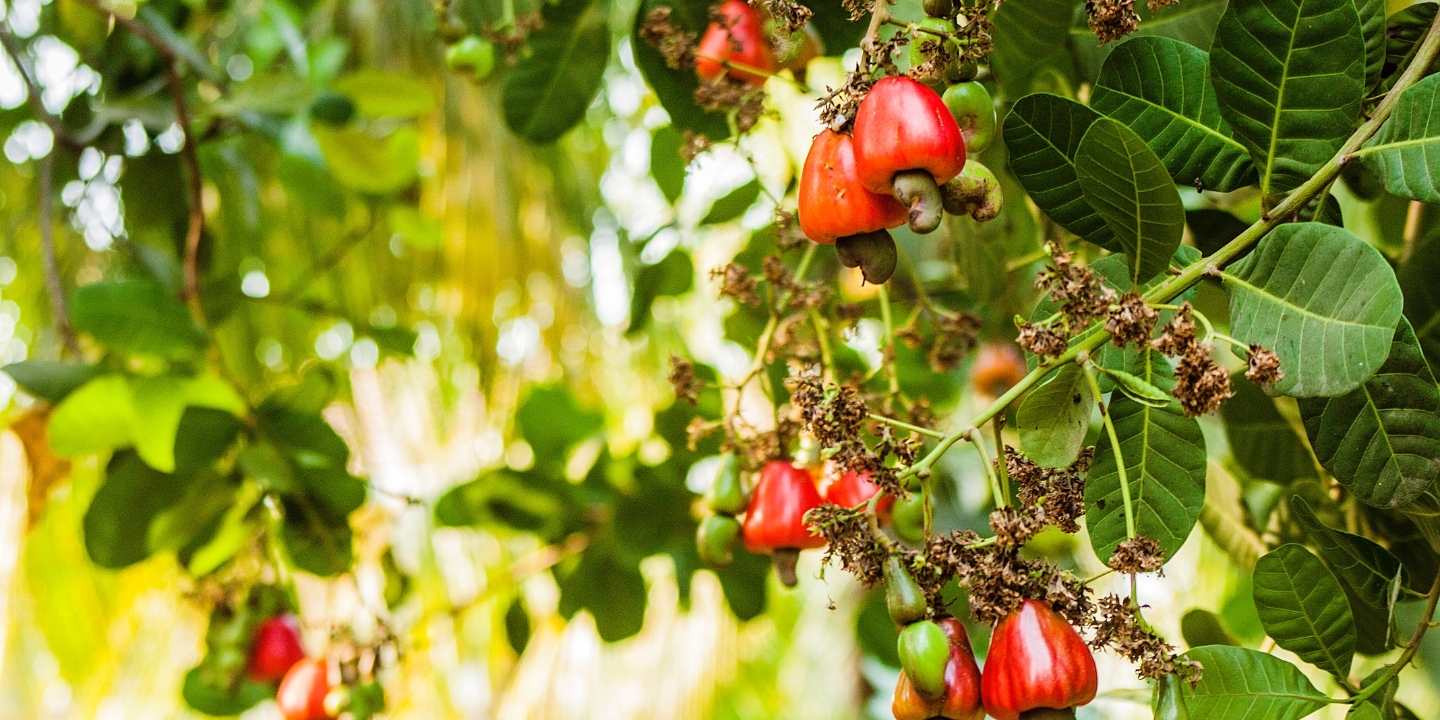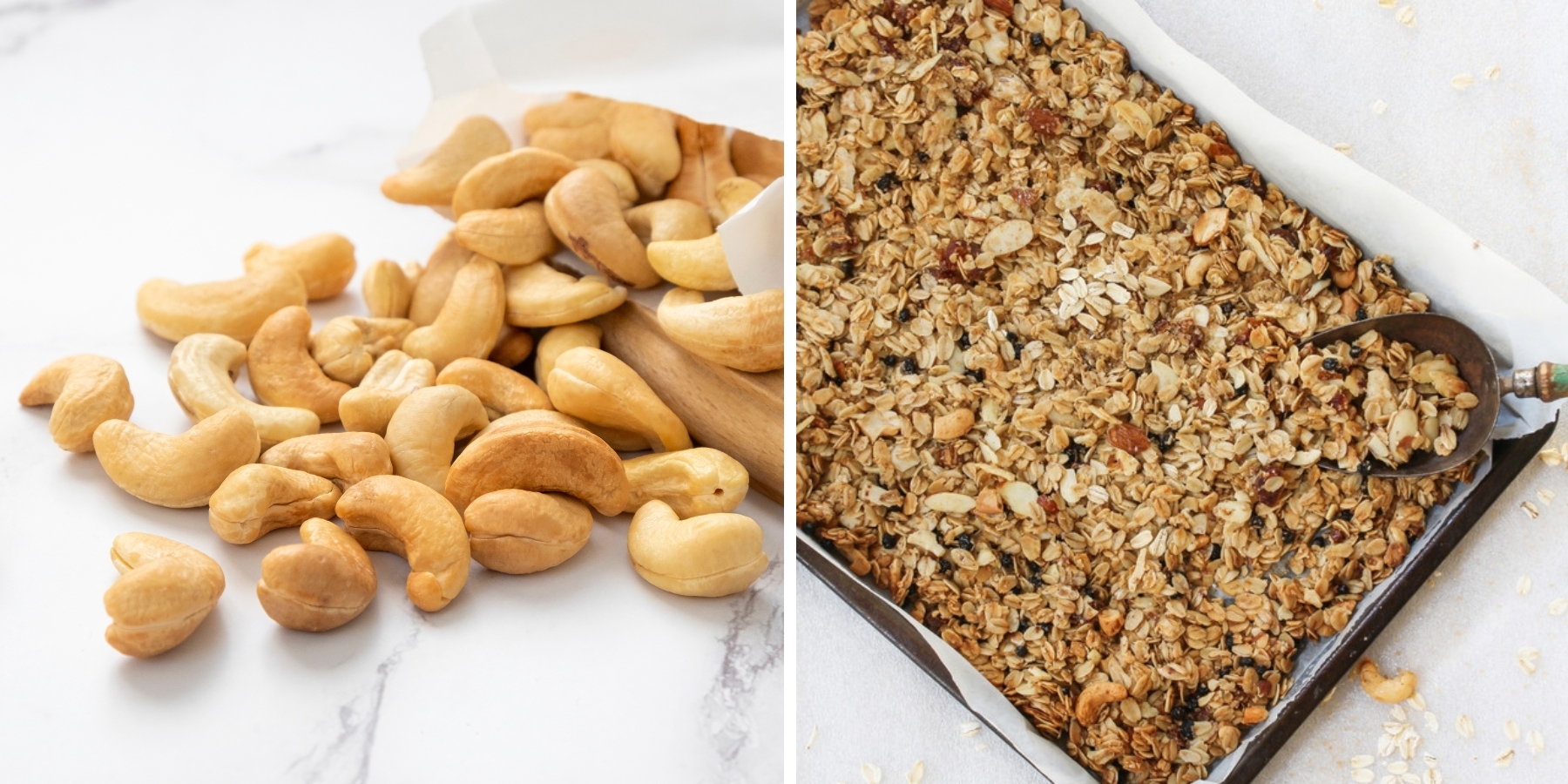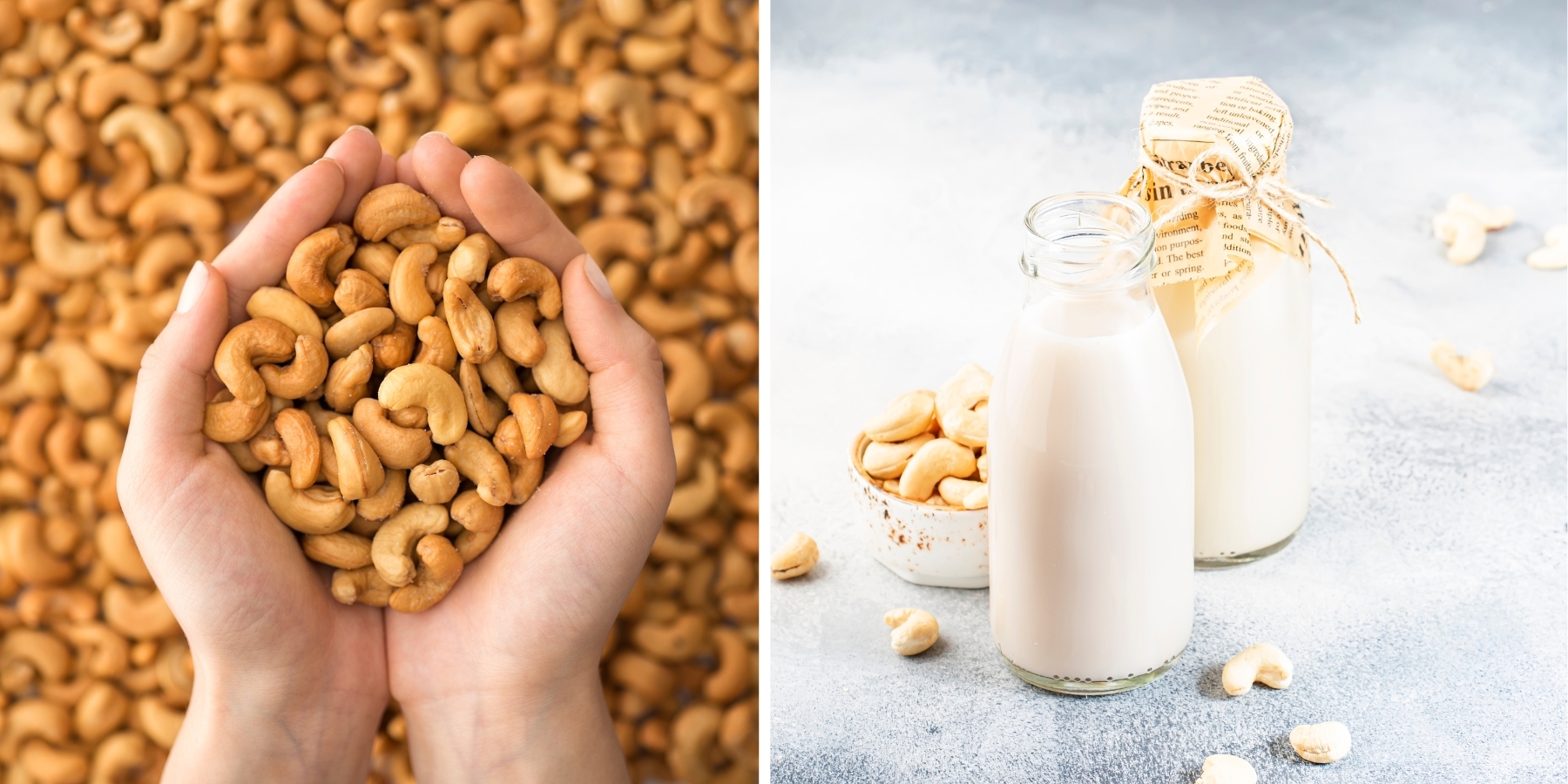Cashews might look like just another snack, but they’re anything but ordinary. These creamy, buttery bites are known for their rich flavour, satisfying crunch, and all-round versatility – no wonder they’re a pantry staple around the world. In 2023 alone, around 3.9 million tonnes of cashew kernels were harvested globally. Despite being known as nuts, cashews are actually seeds that grow on the end of a pear-shaped fruit.
History & Origin
Native to northeastern Brazil, cashews (Anacardium occidentale) have been fuelling civilisations for centuries. Portuguese explorers “discovered” the nut in the New World and loved it so much they shipped cashew trees off to Africa and India in the late 1500s. Today, places like India, Vietnam and the Ivory Coast dominate production. Along the way, cultures found all sorts of uses for the plant. For example, the red cashew apple (the swollen stem above the nut) is a local delicacy – pressed into sweet juice, jams, jellies and even distilled into the famous liquor called feni in Goa, India. The hardwood and shell-resin of the tree have industrial uses too – from boat crates to insecticides. In South and Southeast Asia, cashews became a staple flavour in curries and sweets, while in the West they earned a reputation as a high-end snack and ingredient.
Did you know? The world’s largest cashew tree is actually a single sprawling tree in Brazil covering about 7,500 m² – that’s over an acre!

Activation

“Activating” nuts is the health-food buzzword of the hour. Essentially, it means soaking raw nuts in water (often with a pinch of salt) to kick-start germination, then drying them at low heat. 2die4 Live Foods activates cashews because soaking is said to break down enzyme inhibitors (like phytic acid) and make the nuts easier to chew and digest. Supporters claim activated cashews yield softer, creamier nut butters and sauces. The bottom line: activated cashews often taste a little plumper and smoother, so your gut may just thank you for the extra TLC.
Nutritional Profile & Benefits
Cashews may be small, but they pack a nutritional punch. An ounce (about a handful) has roughly 157 calories, 5 g of protein, and heart-healthy unsaturated fats. They’re also rich in minerals like copper, magnesium, zinc and iron. Here’s a quick rundown of key nutrients:
- Monounsaturated fats: Linked to a lower risk of heart disease.
- Protein: Valuable plant protein source for vegetarians and vegans.
- Copper & Magnesium: Supports brain function, muscle/nerve health and strong bones.
- Iron & Zinc: Linked to increased energy, immunity and healthy blood.
- Antioxidants: Polyphenols and other compounds that help reduce inflammation.
Together, these nutrients support heart, brain and skin health. The good fats can help balance cholesterol, and the minerals nourish your immune and nerve systems. Cashews are a favourite on paleo and keto menus too (in moderation) because they’re whole-food, grain-free fats.
Uses & Recipes

Cashews are one of the handiest all-rounders in the kitchen. Snack on them straight – roasted, salted or spiced – for a quick energy boost. Toss a handful into trail mix or granola, sprinkle over salads, or add them to a hot pan for crunch and creaminess in stir-fries, curries, pilafs or biryanis (like a classic Cashew Chicken or Thai-style stir-fry).
Soaked cashews are great for blending into smooth nut butter, dairy-free milk or even a creamy vegan cheese. Cashew milk makes smoothies and lattes extra silky, and ground cashews are perfect for thickening sauces like Alfredo or a rich Indian korma.
Quick tip: Cashews work just as well with sweet flavours as they do with savoury. Try them with masala, chilli and ginger, or a simple sprinkle of cinammon.
One to try: A creamy Cashew Butter Smoothie – just blend a cup of cashew milk with 2 tbsp cashew butter, a banana and a drizzle of honey. Too easy!
Storing Cashews: Keep cashews in a cool, dark place in an airtight container. Because of their healthy fats, they can go rancid if left warm or exposed to light. Refrigerate or freeze opened bags for longer life. That way, your nuts stay fresh and ready for whatever nutty concoction you dream up next!
Fun Cashew Facts
- Not a true nut: Botanically, the cashew is a drupe seed, not a tree nut. The “nut” we eat is the seed from a fruit (the cashew apple).
- Handle with care: The shells contain a toxic oil (urushiol). Untouched cashew shells can cause a skin rash, just like poison ivy or mango skins. That’s why cashews are always cooked or steamed before they reach your snack bowl.
- Animal fans: Monkeys in Brazil have been spotted using stones to crack open cashews – even capuchins have figured out these nuts!
- Time-honoured delicacy: Ancient cultures prized the cashew. The Mayans and Indians saw it as a medicinal powerhouse – cashew bark was used as a home remedy, and the nut was considered a luxurious food in Ayurvedic medicine.
Cashews truly earn their 2die4 Live Foods spotlight: creamy, nutritious and endlessly adaptable. Whether you munch them solo or blend them into a gourmet sauce, these humble seeds pack a punch of plant-based goodness. Enjoy them raw (well, raw-roasted!) or activated – they’re nutty by nature and 2die4 by name.
Cashew in the next In A Nutshell blog!








